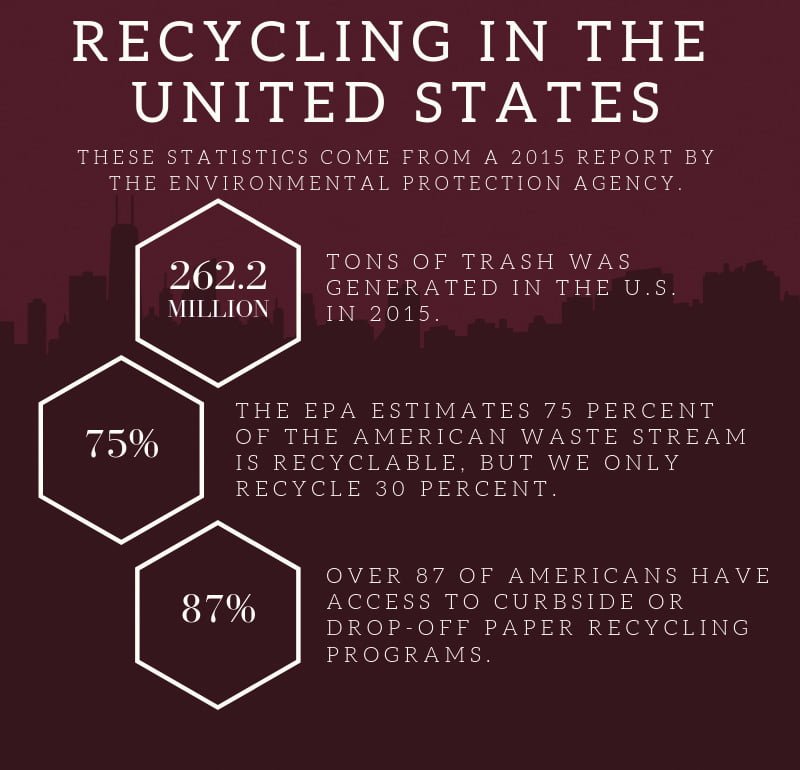Recycling in danger after China ban
In past decades, dozens of countries around the world have sent their recyclable materials to China instead of processing them using their own facilities. This all changed in January 2018, when China banned the importation of most recyclable and non-recyclable waste materials under the National Sword Policy, which was passed in 2017.
Prior to the materials ban, recyclables that were exported to China were processed and repurposed into new products. These new products were often shipped back to the countries where the plastics originated from. Since the ban, however, there has been a significant shift in the way that plastic waste is being processed around the world.
According the Yale School of Forestry and Environmental Studies, 95 percent of plastics collected for recycling in the European Union and 70 percent of recycled plastics in the United States were being sold and shipped to China before the ban.
In the U.S., plastics that are not being shipped to other countries to be processed, like Thailand and Indonesia, are being sent to regional facilities. At these regional facilities, plastics are incinerated, compacted or are often sent to landfills, with some of the plastics ending up in the oceans along with non-recyclable waste.
The increase in plastic that is being “recycled” in these ways is contributing to air, water and soil contamination, as well as habitat pollutions in the cases of plastics entering the ocean. In addition to the effects caused by the shift in the amount of plastic being processed domestically, very little of it is being reused to produce a new product.
One thing that prompted the ban in the first place was the lack of proper separation of recyclable items. Instead of having the individual consumer separate wastes into paper, glass and plastic, it was all being dumped into the same bin. This made it more difficult to efficiently process the waste and get it into a state where it could be reused.
Pertaining to the influx of recyclables into U.S. processing plants, the cost of recycling is trending upwards while the revenue based off the industry is going down, causing smaller recycling operation to close down.
In some areas a restriction has been placed on what can and cannot be recycled, as some cities are no longer collecting certain plastics. Others are no longer doing curbside pickup of recyclables, forcing residents to take recyclables to the nearest processing facilities. Some people have started to stop recycling altogether, putting everything into one trash can.
With the increase in need to get rid of plastics, incineration in waste-to-energy plants is becoming a more prevalent disposal method, although harmful to air quality.
This has all been detrimental to recycling in the U.S. and other developed nations who are no longer able to send their waste to China, but this ban seems to be helping in the ways that the National Sword Policy had hoped. With the decrease in imported plastic, fewer workers will have to be exposed to the process of breaking down the waste, and there will be less plastic being introduced as a main pollutant in China relative to years before the ban.
Overall, the Chinese ban on plastic waste appears to be succeeding in its goals, but the countries that have been affected will need to begin to find a way to deal with their plastic problems.






